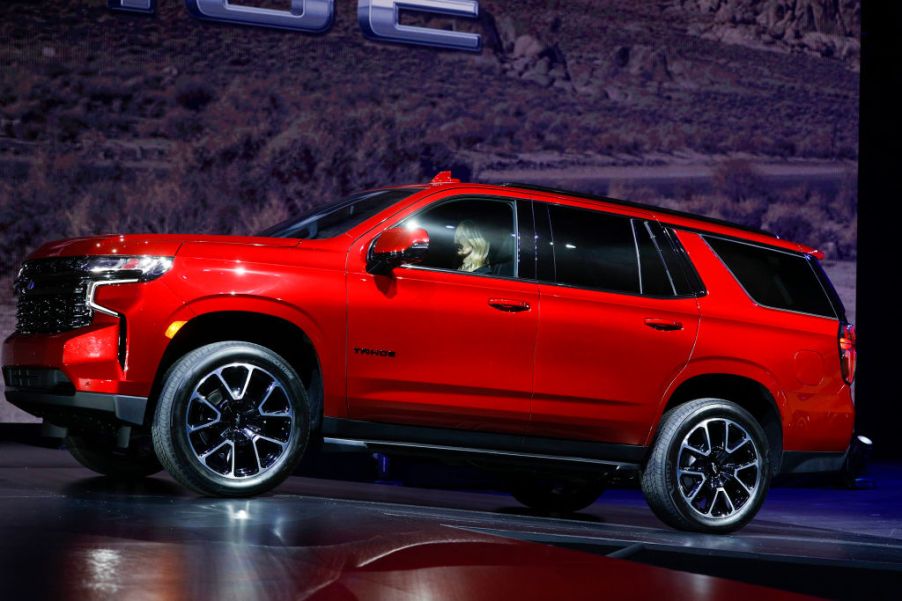
The Most Common Chevy Tahoe Complaints Are the Most Expensive
When it comes to a family vehicle, drivers look for certain specifics that their purchase should have, especially since they would spend a ton of money on SUVs like the Chevy Tahoe. Features are great to have, but reliability needs to be a factor as well.
The Chevy Tahoe hasn’t always had the best track record when it comes to owner complaints. Over the years, it’s seen some pretty expensive problems that drove previous GM fans away. CarComplaints.com shows the top three complaints the Tahoe has and just how severe they were for owners.
The air conditioner in the Chevy Tahoe stops keeping you cool
There’s nothing quite as satisfying as when you get into a vehicle on a hot day and feel the cool air from the A/C blowing on your skin. Well, some owners experienced the unthinkable.
They got in their 2015 Tahoe when the temperatures were soaring high, only to find that their A/C wouldn’t blow cool air. The problem is that these vehicles only had, on average, less than 80,000 miles on them.
The condensers would fail and need replacing. Repair bills for this would be around $1,500. Some owners with the 5.3-liter engines found that the condensers would continue to fail about every 50,000 miles. This would mean they would end up paying the $1,500 once every year or two.
Eventually, GM put out a recall for it, but it was for vehicles needing it that has under 60,000 miles on them. Those who didn’t experience the problem until later would end up paying for the repairs themselves.
Excessive oil consumption in the motor
As with many other GM vehicles, owners of the 2009 Chevy Tahoe would notice that their vehicle was low on motor oil. Despite having performed regular maintenance faithfully, these drivers found that they had to add a quart to 3 quarts of oil in between oil changes.
When they took it to the dealerships, some would recognize the problem right away without even having looked at the Tahoe. Owners would be told that it was common for these motors – the 5.3-liter engine – to have pistons and cylinders go bad. It’s not uncommon for this to happen, but it shouldn’t happen to vehicles that have under 100,000 miles on them.
To fix the problem, drivers would have to replace the engine, which could bring a cost as high as $6,800 of their own money. If they could get by with just replacing the pistons and rings, repairs would be around $2,000.
Leaking antifreeze coolant
Owners noticed that their engine coolant started disappearing from their 2004 Tahoe. Sometimes they would get a check engine light alerting them that the motor was running hot. Other times they didn’t have a clue anything was wrong until they happened to be checking the level of antifreeze in the radiator. Other signs, like water seeping out of the exhaust, would show up.
At first, it didn’t seem like there was anything to worry about since some engines just use more coolant once in a while. However, the problem would persist, and they poured in a gallon to a gallon and a half every few thousand miles. When they took the Tahoe to the dealership, they were told that they needed either replace the engine or they needed a cylinder replacement.
It turned out that the Castech heads GM used on the Tahoe and other vehicles, had a faulty defect in them, causing the cylinders to crack. The cracking would enable coolant to escape, and the engine would start overheating, which is why they would find their radiators so dangerously low of antifreeze.
The owners would get saddled with repair bills that cost anywhere from $3,000 to $6,500 depending on what repair the techs completed. GM extended the warranty on some vehicles, but most came across the problem when the warranty had expired. In a few cases, GM offered to pay half of the repair bill, but drivers still paid around $2,500 on average for a manufacturing defect.
The Chevy Tahoe is an impressive SUV, but with these expensive repairs, it may not be the best choice when choosing a used Tahoe to buy. The newer ones, like the 2019 model, have better reliability ratings than the older ones. So if you feel like you want to get a Tahoe for your very own, stick with the newer models.


